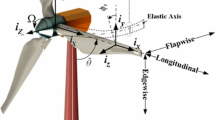Abstract
Time-domain-finite-wave analysis of the engine exhaust system is usually done using the method of characteristics. This makes use of either the moving frame method, or the stationary frame method. The stationary frame method is more convenient than its counterpart inasmuch as it avoids the tedium of graphical computations. In this paper (part I), the stationary-frame computational scheme along with the boundary conditions has been implemented. The analysis of a uniform tube, cavity-pipe junction including the engine and the radiation ends, and also the simple area discontinuities has been presented. The analysis has been done accounting for wall friction and heat-transfer for a one-dimensional unsteady flow. In the process, a few inconsistencies in the formulations reported in the literature have been pointed out and corrected. In the accompanying paper (part II) results obtained from the simulation are shown to be in good agreement with the experimental observations.
Similar content being viewed by others
References
Annand W J D, Roe C E 1974Gas flow in the internal combustion engine (Sparkford: G T Foulis)
Benson R S 1982The thermodynamics and gas dynamics of internal combustion engines (Oxford: Clarendon Press)
Deshpande S R, Chandra H 1989 Mathematical simulation of noise generated by the exhaust gases from a single-cylinder four-stroke petrol engine.Proceedings of the XI National Conference on IC Engines and Combustion, Madras, December 11–15
Ferrari G, Castelli R 1985 Computer prediction and experimental tests of exhaust noise in single cylinder internal combustion engines.Noise Control Eng. J. 24 (2): 50–57
Goyal M, Scharpf G, Borman G 1967 The simulation of single cylinder intake and exhaust systems.SAE Trans. 76: 1733–1747
Gupta V H 1991On the flow-acoustic modelling of the exhaust system of a reciprocating internal combustion engine. Ph D thesis, Indian Institute of Science, Bangalore.
Gupta V H, Munjal M L 1993 Finite wave analysis of the engine exhaust system by means of the stationary-frame method of characteristics. Part II. Computed results and experimental corroboration thereof.Sādhanā 18: 927–941
Jones A D, Brown G L 1982 Determination of two-stroke engine exhaust noise by the method of characteristics.J. Sound Vibration 82: 305–327
Low S C, Baruah P C 1981 A generalized computer aided design package forIC engine manifold system.SAE Trans. 90: 1869–1877
Munjal M L 1987Acoustics of ducts and mufflers (New York: John Wiley and Sons)
Wallace F J 1954 Effect of friction on compression and rarefaction waves of finite amplitude.Engineering 176: 674
Author information
Authors and Affiliations
Rights and permissions
About this article
Cite this article
Gupta, V.H., Munjal, M.L. Time-domain-finite-wave analysis of the engine exhaust system by means of the stationary-frame method of characteristics. Part I. Theory. Sadhana 18, 911–925 (1993). https://doi.org/10.1007/BF03028385
Received:
Revised:
Issue Date:
DOI: https://doi.org/10.1007/BF03028385




